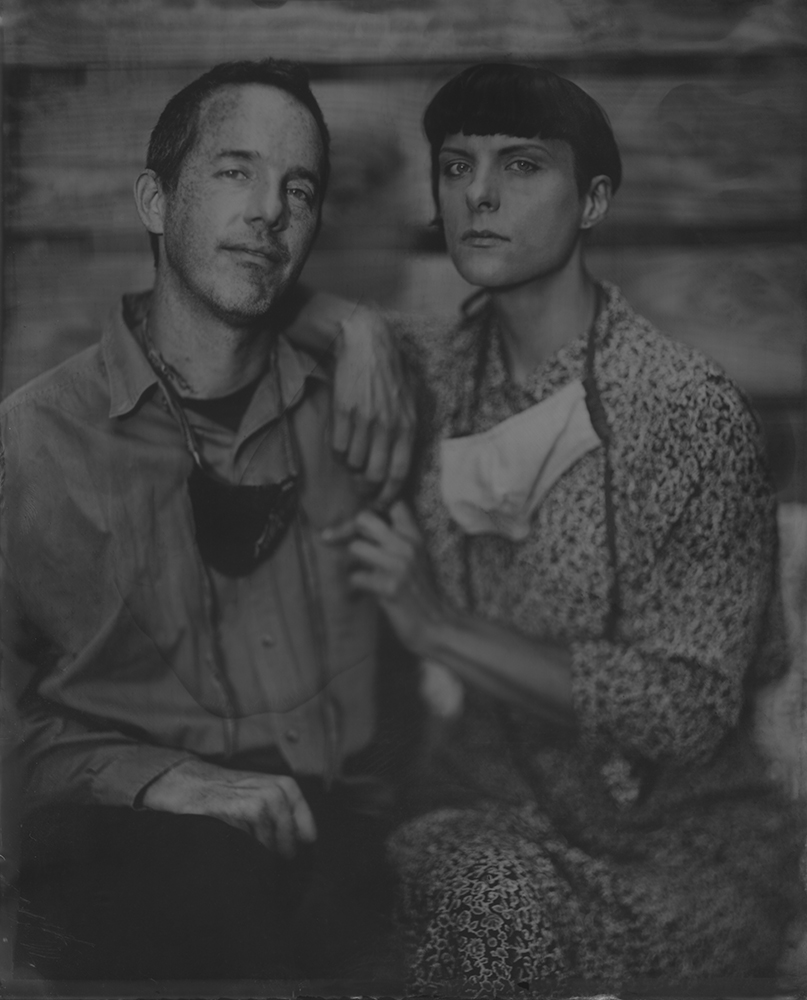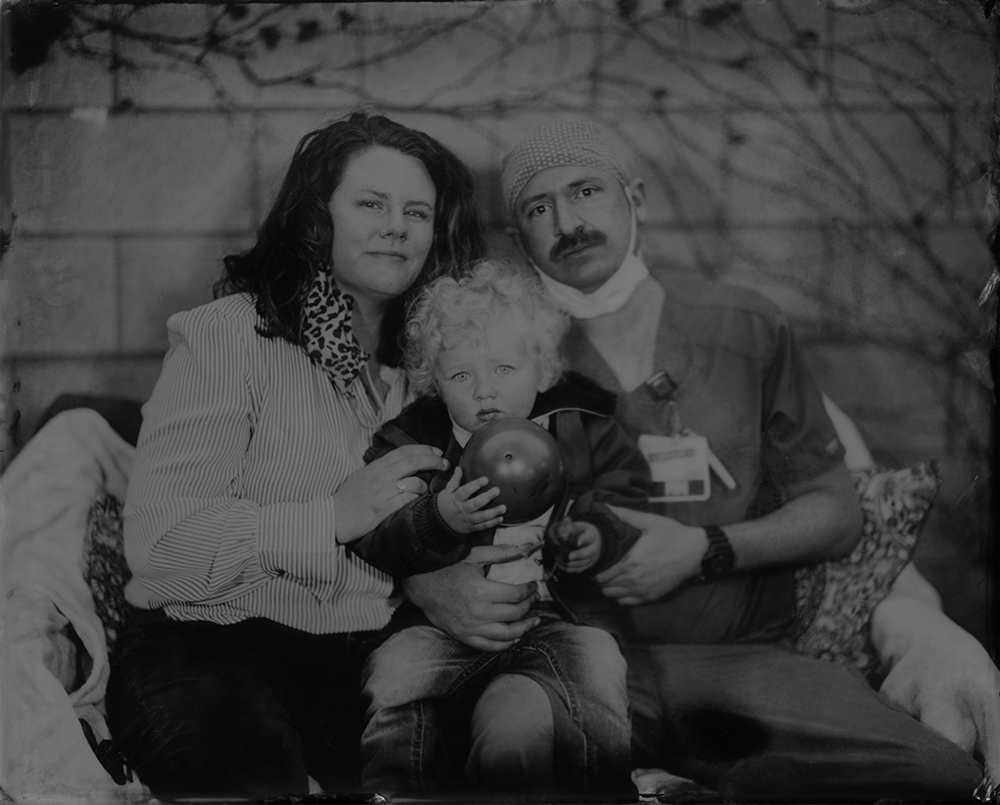Focus on Portraiture: Helen Maurene Cooper: The Caregivers
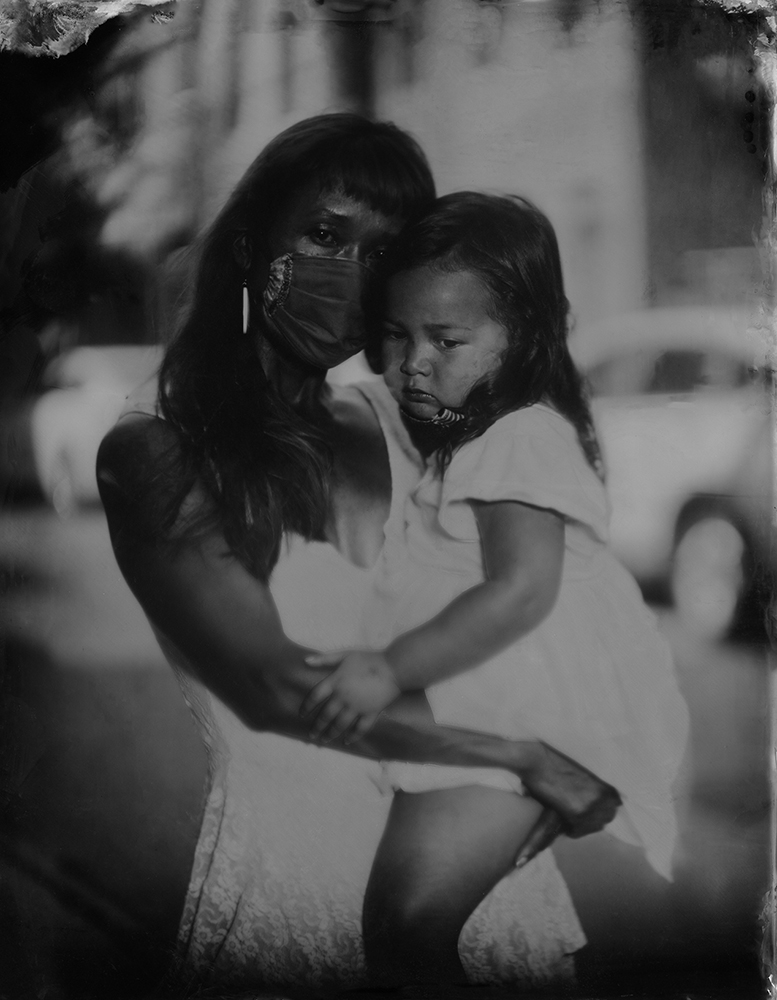
©Helen Maurene Cooper, Virginia and her daughter Ruby, one- of- a -kind ambrotype on clear glass, 7 ¾’ by 9 ¼”, 2020
Lavender, tree sap and alcohol…the final coating that prevents tarnishing on ambrotypes, perfume the portraits of caregivers by Helen Maurene Cooper.
Ambrotypes using wet plate collodion employ a demanding process we most associate with peering back into history. By skillfully and poetically using the qualities inherent in the medium — the undulating focus, the intensified gaze, the unspared flesh, the stillness required — Cooper brings us into the unsettling immediacy of the pandemic. We are living history as we recognize the worry in our neighbors’ masked faces.
Cooper draws out gestures that are both feral and vulnerable. Her sitters huddle like mountains of protection, cradling their young. Some tenderly lean into each other. These timely and timeless portraits show us the cycles of life inextricably bound with care and love.
Helen Maurene Cooper is an artist and educator living in Philadelphia, PA. She earned an MFA from the School of the Art Institute of Chicago and a BA from Bard College. She has exhibited widely, nationally, and internationally; Onomatopee (Eindhoven, Netherlands), Clare MorrisGallery (Ireland), Soap Factory (Minneapolis), Space Mountain (Miami), and Gaylord & Dorothy Donnelley Foundation (Chicago).
Her work is represented by Bert Green Fine Art, (Chicago). Awards and Fellowships include; the Cultural Council of Eindhoven, the Chicago Department of Cultural Affairs, and the University of Chicago. Her 2017 monograph, Paint & Polish: Visual Economy and Visual Culture from the West Side (Onomatopee, Eindhoven Netherlands). Paint & Polish was reviewed in Bust.com, New City, Nails Magazine, and the Creators Vice Magazine. Artists’ talks have been given at PS1, The Fashion Institute of Technology, Kansas City Art Institute, Elmhurst Art Museum, The Arts Incubator at the University of Chicago, and Oxbow School of Painting.
In February 2021 she will be lecturing on her work at the New School and SUNy Oswego and will take part in a panel on wet-plate photography made in 2020 with the Halide Project in Philadelphia. She is currently working on grant and residency applications to produce platinum and Piezography prints.

©Helen Maurene Cooper, My mother with our daughter Frances, one- of- a -kind ambrotype on clear glass, 7 ¾’ by 9 ¼”, 2020
The Caregivers
The Caregivers comes from my lived experience as both a mother and a daughter. On a personal level, the work is influenced by the role I play for my toddler and my aging mother while at the same time speaking to the universal experiences of nurturing, protecting, and supporting those we love. This series of portraits, made in Philadelphia, PA, (United States) during the Covid-19 Pandemic using an 8×10 analog film camera, the nineteenth-century image-making process of wet plate collodion and my back patio as well as the sidewalk in front of my home. This work depicts my racially diverse community and weaves together issues surrounding the role of caretakers in both straight and queer families, and the emotional and physical labor of caretaking as a radical act.
I look to my neighborhood, for subjects and collaborators. From my front stoop with the baby in my lap, I observe people walking down the block and I search for those demonstrating care and affection in the public space. I am intrigued by the dynamics and details of families and romantic partnerships. In a time of collective grief, I choose to depict the action of holding space for one and another. The camera and the photograph are the pretext to observe shared human experience. They are my conduit for connection. I contextualize the 8×10 camera and the wet plate process as the ultimate 21st-century tools in participatory practice. Both are novel and demand from the sitter a time commitment and focused engagement in the image-making process. In a time of necessary social prohibition, these outdoor portrait sessions have provided an escape for all involved. Standing on my corner with the imposing 8x 10 camera entices neighbors to introduce themselves and ask to participate. And as I built up the work posting progress on social media, requests from perfect strangers flow.
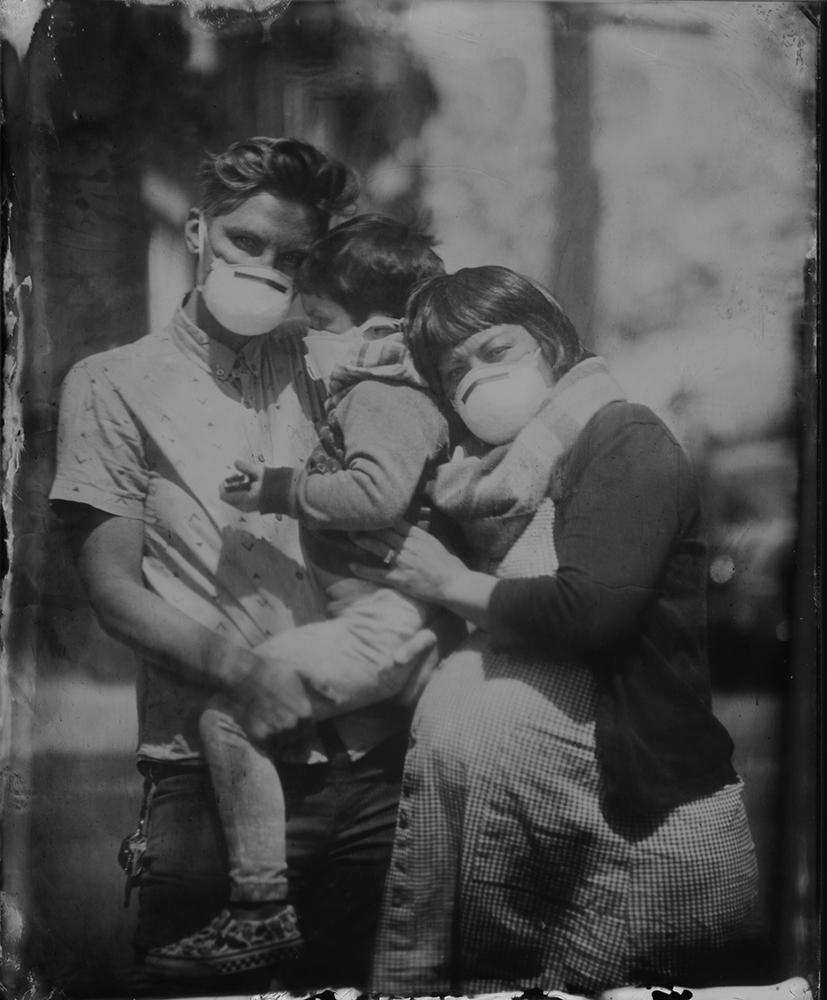
©Helen Maurene Cooper, Korin and Kiko with their son Eukiah , one- of- a -kind ambrotype on clear glass, 7 ¾’ by 9 ¼”, 2020
I begin each collaboration by taking a long walk with my subjects; I observe their chemistry and their body language. We talk and we connect. It is imperative for my work that a social interaction transpires on an occasion before photographs are made. In preparation for the first shoot, I share a color key example from my studio — a still life in color is represented next to the same still life in collodion. This makes a visible translation of color into the silver nitrate. It begins a conversation about what to wear and not to wear for the session. Over a series of multiple sessions, (sometimes many months passing in between) I conspire with my subjects to tell intimate stories of how they cherish, uphold, and safeguard each other. Through gesture, expression, the placement of bodies, and the manipulation of perspective, I depict a wide range of the families, queer and heteronormative, nuclear and intergenerational, who live within walking distance of my front stoop. Ultimately, the sitters are gifted a plate as a remembrance of this exchange.
The Caregivers weaves together a narrative of participation, placemaking, and world-building, in the public space of our community, looking at the politics of family and intimacy.
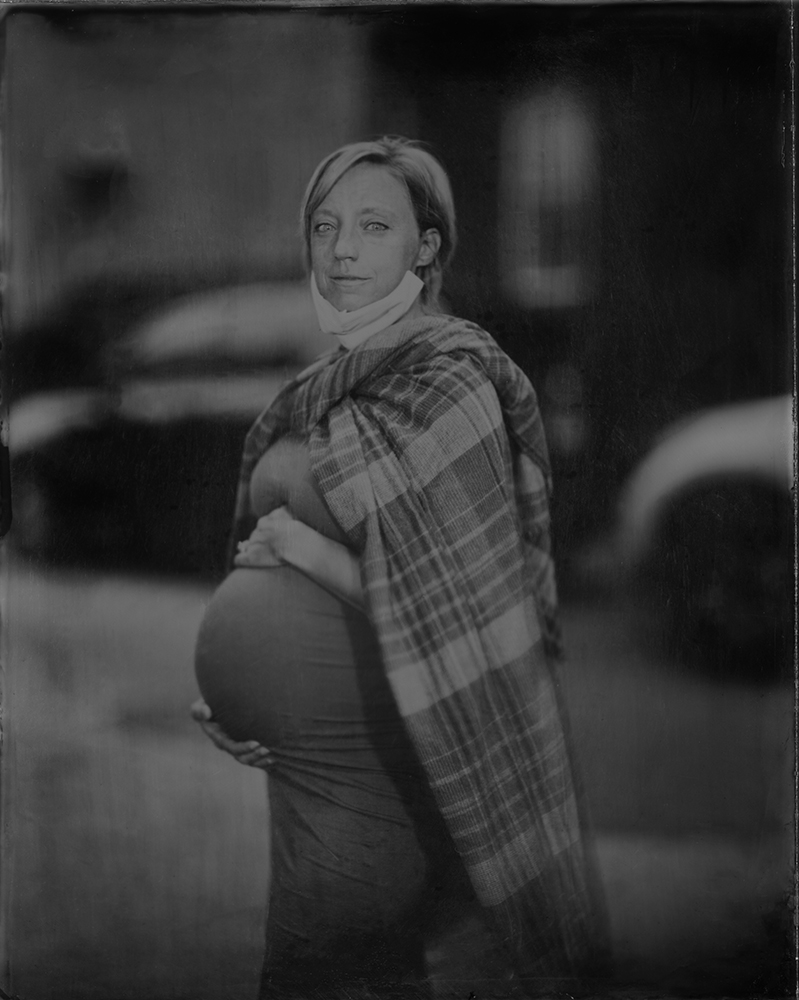
©Helen Maurene Cooper, Alexis a week before the birth of Maeve, one- of- a -kind ambrotype on clear glass, 7 ¾’ by 9 ¼”, 2020

©Helen Maurene Cooper, Kaite with her oldest daughter Marine, one- of- a -kind ambrotype on clear glass, 7 ¾’ by 9 ¼”, 2020
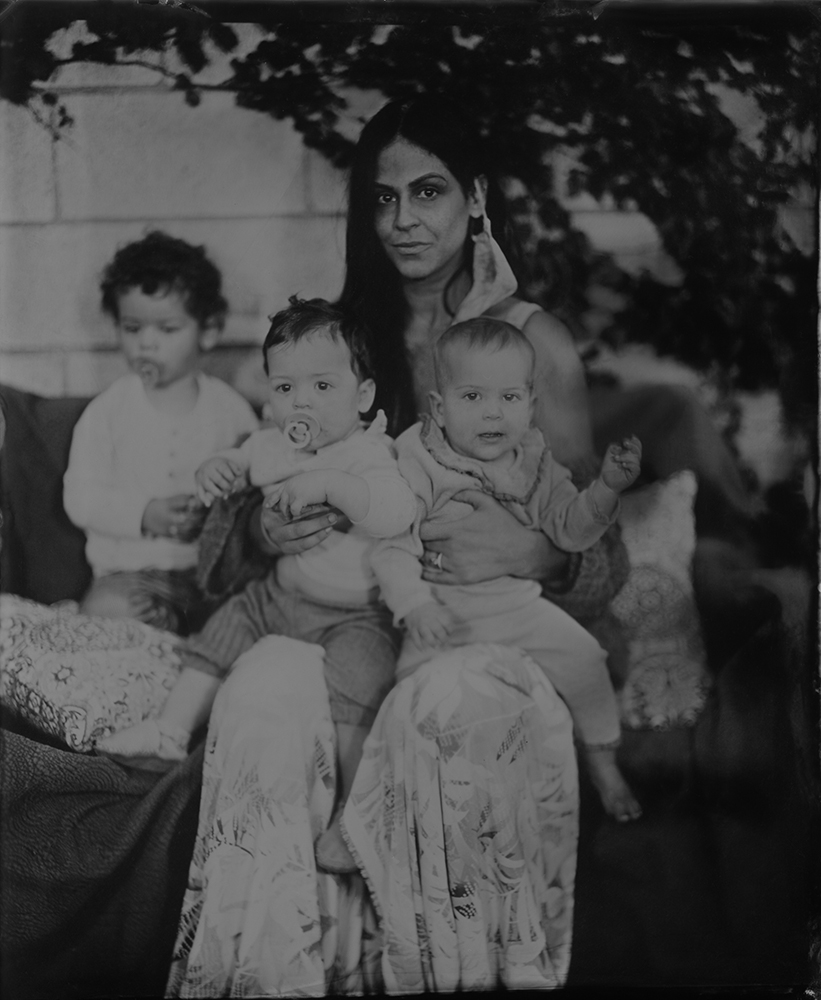
©Helen Maurene Cooper, Steph with her children, Willy, Liona, and Cole, one-of-a-kind ambrotype on clear glass, 7 ¾’ by 9 ¼”, 2020

©Helen Maurene Cooper, Dese’Rae & Felicidad with their children Theo & Gus, one-of-a-kind ambrotype on clear glass, 7 ¾’ by 9 ¼”, 2020
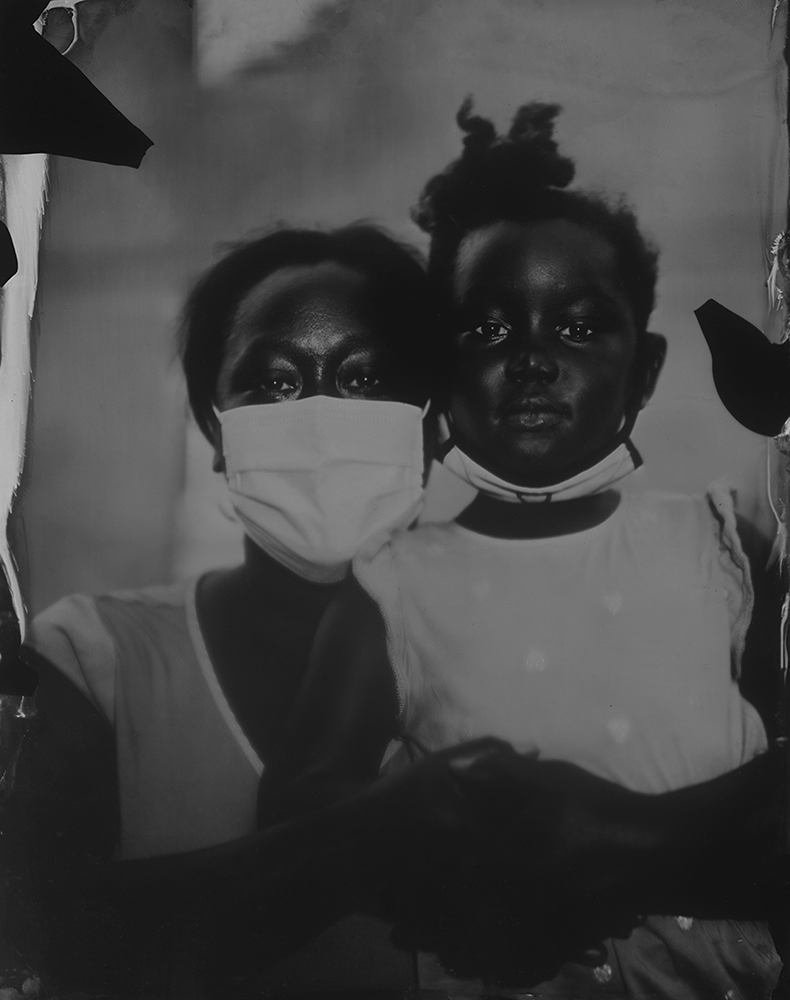
©Helen Maurene Cooper, Franchesca with her daughter Victoria, one-of-a-kind ambrotype on clear glass, 7 ¾’ by 9 ¼”, 2020

©Helen Maurene Cooper, Jen and Brian with their daughter Savannah, one-of-a-kind ambrotype on clear glass, 7 ¾’ by 9 ¼”, 2020
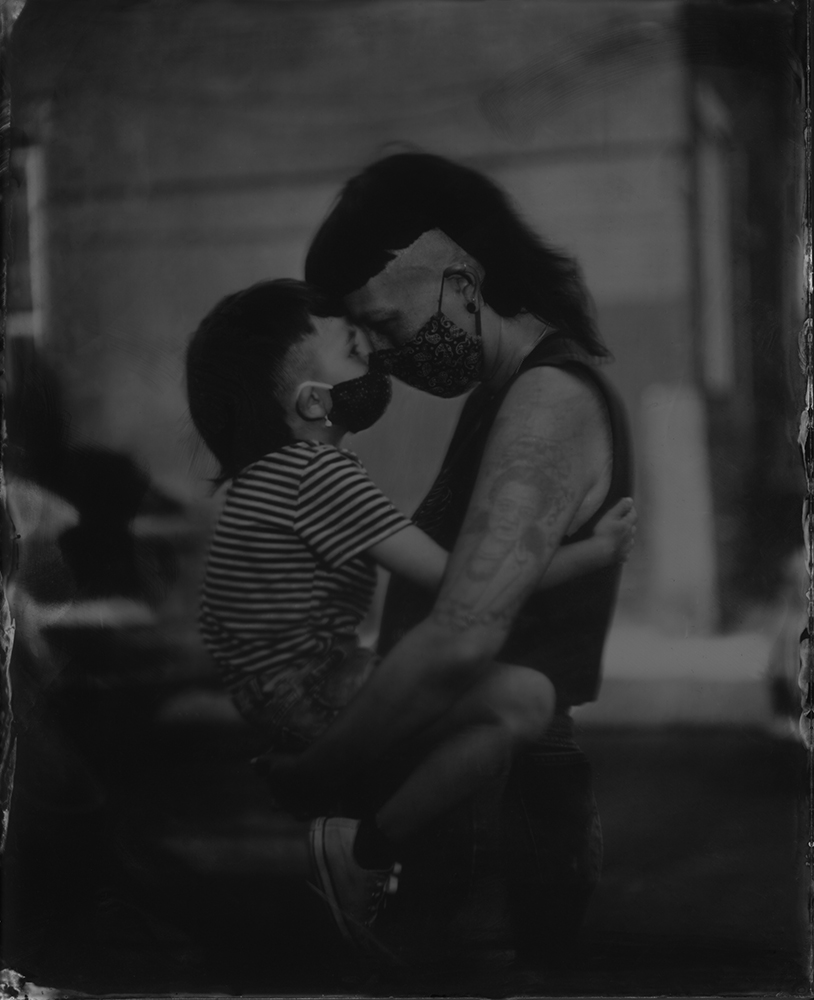
©Helen Maurene Cooper, Anastasia with their child Zepher, one-of-a-kind ambrotype on clear glass, 7 ¾’ by 9 ¼”, 2020
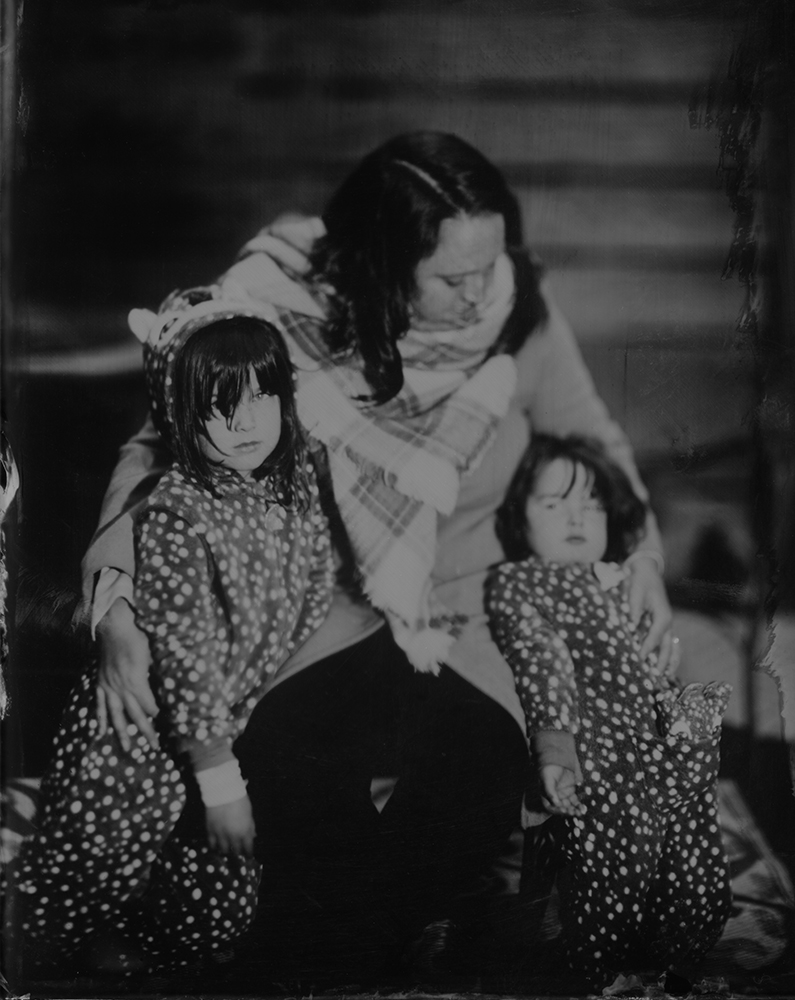
©Helen Maurene Cooper, Claire with her girls, Maeve and Orla, one-of-a-kind ambrotype on clear glass, 7 ¾’ by 9 ¼”, 2021
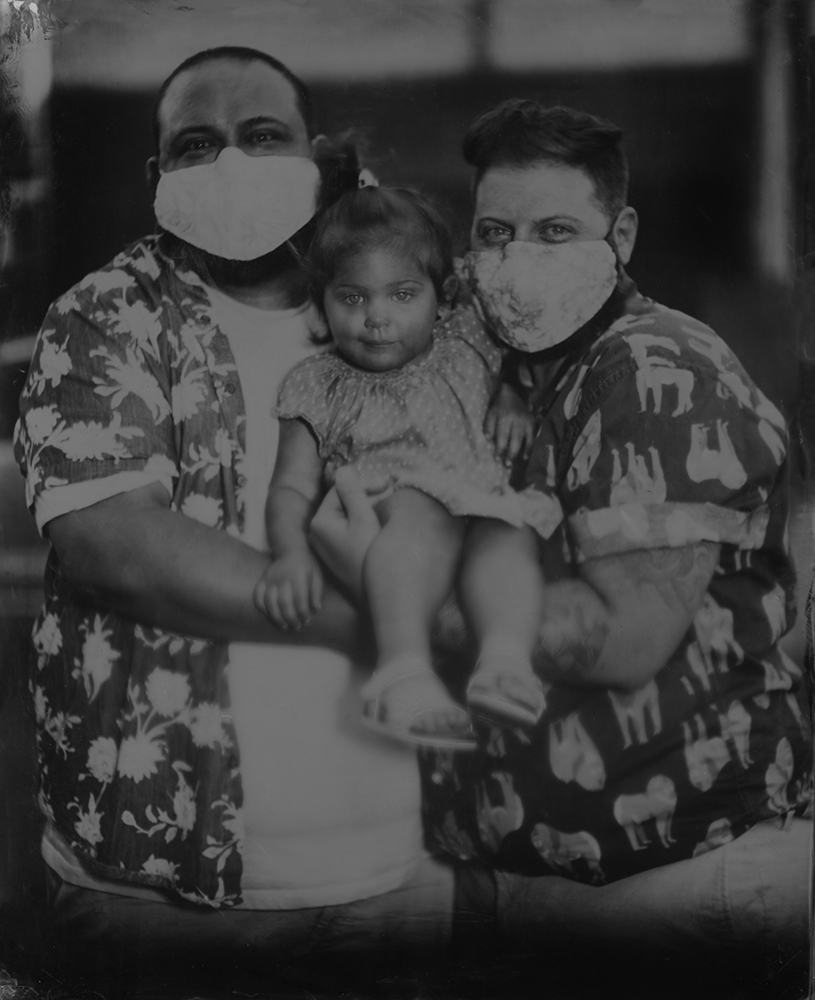
©Helen Maurene Cooper, Bea with her father’s Sauce and Daniel, one-of-a-kind ambrotype on clear glass, unframed 7 ¾’ by 9 ¼”, 2020
Posts on Lenscratch may not be reproduced without the permission of the Lenscratch staff and the photographer.
Recommended
-
Ragne Kristine Sigmond: Portraits of Painterly LightDecember 2nd, 2025
-
Mary Pat Reeve: Illuminating the NightDecember 1st, 2025
-
Ricardo Miguel Hernández: When the memory turns to dust and Beyond PainNovember 28th, 2025
-
Pamela Landau Connolly: Columbus DriveNovember 26th, 2025
-
MATERNAL LEGACIES: OUR MOTHERS OURSELVES EXHIBITIONNovember 20th, 2025


